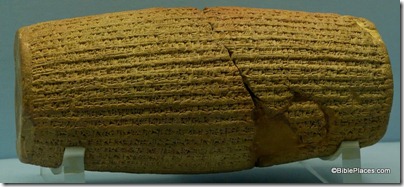From the Jerusalem Post:
A royal box built at the upper level of King Herod’s private theater at Herodium has been fully unveiled in recent excavations at the archaeological site, providing a further indication of the luxurious lifestyle favored by the well-known Jewish monarch, the Hebrew University announced in a statement released Tuesday.
The theater, first revealed in 2008, is located halfway up the hill near Herod’s mausoleum, whose exposure in 2007 aroused worldwide attention. The highly decorated, fairly small theater was built in approximately 15 BCE, which was the year of the visit of Roman leader Marcus Agrippa to Judea, Emperor Augustus’s right-hand man, according to Prof. Nezter, who has been assisted in the excavations by Yakov Kalman, Roi Porath and Rachel Chachy.
The royal box (measuring eight by seven meters and about six meters high) is the central space among a group of rooms attached to the upper part of the theater’s structure. This impressive room likely hosted the king, his close friends and family members during performances in the theater and was fully open facing the stage.
Its back and side walls are adorned with an elaborate scheme of wall paintings and plaster moldings in a style that has not been seen thus far in Israel; yet, this style is known to have existed in Rome and Campania in Italy during those years. This work, therefore, was probably executed by Italian artists, perhaps sent by Marcus Agrippa, who a year before his visit to Judea met Herod on the famous Greek island of Lesbos, said Netzer.
The article continues here. A similar story is posted at China Daily. For previous stories on Herod’s tomb, see here. The Smithsonian has a gallery of a dozen photos of the Herodium, the last two of which (11, 12) show the most recent excavations.
HT: Joe Lauer

